Compared with the pruning guidelines for many shrubs and trees, hydrangeas’ pruning needs are pretty minimal. Most need very little actual pruning. They’re fine with just enough of a trim to shape the plant, get rid of dead branches and encourage future blooms.
If you know what type of hydrangea you have, check below for recommended pruning guidelines. If you’re not sure, you’ll need to know whether your hydrangea blooms on old wood or new wood before you take to the shrub with a pair of clippers.
Find the Best Landscaping Companies Near Boston
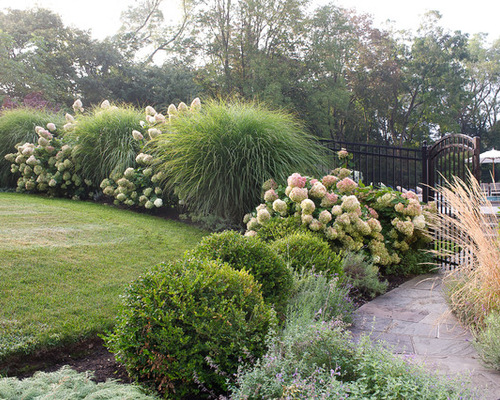
Amy Martin Landscape Design, original photo on Houzz
The basics: There are two simple rules of hydrangea pruning. If it blooms on old wood, you prune after the blooms fade in the middle of summer or else wait until late winter or early spring. And if it blooms on new wood, then late winter or early spring is the optimal time to prune.
Outdoor Fountains That Add Tranquility to Any Garden
New wood versus old wood: To figure out what gardeners mean when they talk about old and new wood, take a look at your plant while it’s in bloom. If the blooms are on stems and branches that appeared on the plant during the previous year or years, then that species of hydrangea blooms on old wood. If the blooms are clustered on new stems and branches that first appeared in early spring of the current year, then your plant blooms on new wood.
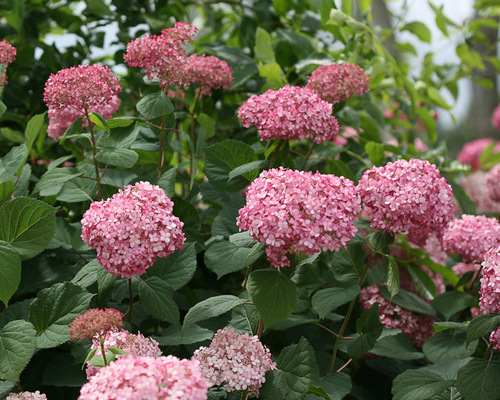
Proven Winners, original photo on Houzz
Wild hydrangeas. Wild hydrangeas (Hydrangea arborescens) bloom on new wood. ‘Annabelle’, a beautiful white hydrangea, is the most popular wild hydrangea cultivar. Cut them back to about 6 to 12 inches from the ground in late winter or early spring, before new wood emerges. You can cut them higher if you want to encourage taller growth or help prevent the lowest branches from flopping over.
Bigleaf hydrangeas. Almost all bigleaf hydrangeas (H. macrophylla) bloom on old wood. Most of these need little pruning, but if you do want to remove old or dead wood, or cut off wayward branches, do so in midsummer after blooms have faded.
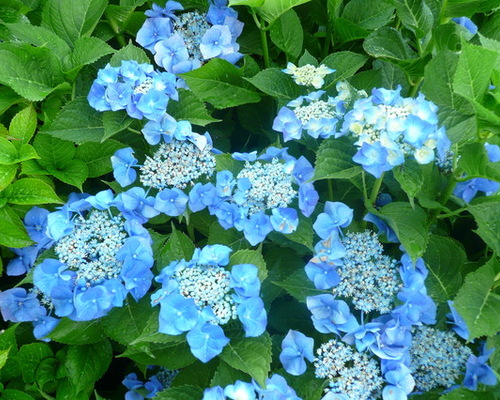
Michelle, original photo on Houzz
You can let blooms stay on the plant until they drop off naturally, or until about late winter or early spring. If you want to cut them off after they bloom, do so as long as it’s still midsummer. Whichever choice you make, simply cut back to the next set of buds.
Older shrubs may begin to be too crowded and unproductive. If that’s the case, cut out up to a third of the oldest stems in late winter or early spring, just before the plant comes out of dormancy. This will help open up the shrub and encourage new and more vigorous growth.
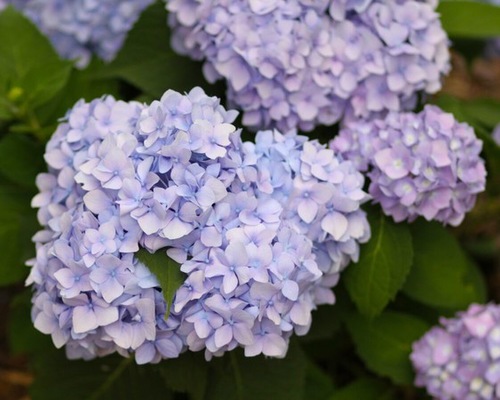
Simons Landscaping, original photo on Houzz
The exceptions in this particular group of hydrangeas are the repeat bloomers, such as those in the Endless Summer series. They bloom on both old and new wood, so you can lightly trim them as needed throughout most of the year.
Oakleaf hydrangeas. Oakleaf hydrangeas (H. quercifolia) also bloom on old wood. Cut the faded flower stems back to the closest leaf joint. If you do need to clean up the plant, cut out dead wood and weak stems in late winter or early spring.
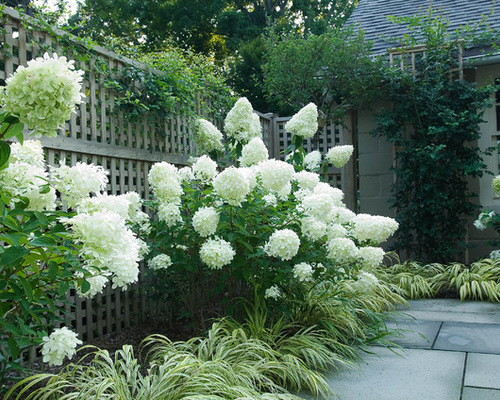
Westover Landscape Design, original photo on Houzz
Panicled hydrangeas. Prune panicled hydrangeas (H. paniculata), including ‘Grandiflora’ and ‘Limelight’ hydrangeas, in late winter. You can remove faded flowers at any time.
Climbing hydrangeas. Climbing hydrangeas (H. petiolaris) should be trimmed just to shape them right after they stop flowering.

